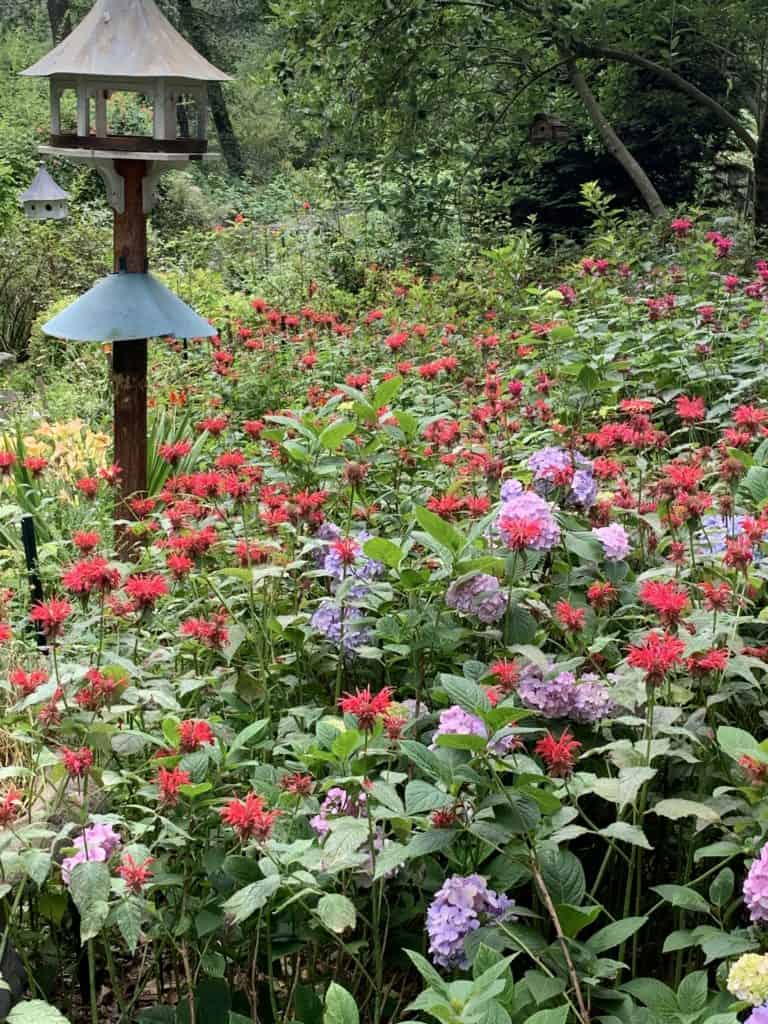Gardening for Health

Beauty of Bee Balm
By Maria Price
With terminal clusters of crimson, scarlet or purple flowers that look like fireworks, one of our most beautiful native plants has to be Monarda didyma or bee balm.
Monardas are members of the mint family. Butterflies and hummingbirds flock to its nectar-rich flowers, which bloom mid-summer. Cultivars have been selected with a range of pink, red, and purple flowers. Some cultivars are hybrids with another native species, Monarda fistulosa, which has clusters of violet flowers and sweetly aromatic foliage. Monarda fistulosa is better known as wild bergamot and it prefers open, drier settings.
Bee balm prefers moist soil, partial sun to partial shade, is easily grown from seed and can grow to about 3 or 4 feet tall. It’s also very easy to divide. It is important to note that it can take over less robust plants in moist soils.
Their natural range is Maine to Michigan, south to New Jersey, West Virginia and Ohio, and along the mountains of Northern Georgia.
Monarda was used by Native Americans in Oswego, New York, to flavor their beverages, leading to it also being called Oswego tea. Other common names include horse mint and bergamot, the latter inspired by the scent of the leaves which smell like bergamot orange. Bergamot orange is used to flavor Earl Grey tea.
Several species of bee balm are used medicinally with the crushed leaves exuding a fragrant essential oil. The flowers can be plucked from the stem and put into salad as an edible flower with an oregano taste. The stems with flowers can be cut and dried and made into tea. In aromatherapy, the essential oil is used as a calmative, anti-depressant and anxiety reducer. Native Americans used bee balm extensively as a medicinal plant. The essential oil of Oswego tea consists of linalool, 1,8-cineole, limonene, gamma-terpinene and para-cymene providing a medicinal lavender-eucalyptus odor.
Monarda fistulosa contains geraniol and a great deal of thymol, an antiseptic that is the active ingredient in Listerine, the popular mouthwash.
Monarda didyma is a hardy perennial. Downy mildew on the leaves can be unsightly but does not seem to damage the plant. “Cambridge Scarlet” and “Raspberry Wine” are two beautiful cultivars to try. Monarda x media or hybrid bee balm represents a large portion of the monardas available in garden centers. It includes some cultivars such as “Blue Stocking”, “Mahogany” and “Petite Delight” which is a dwarf hybridization of Monarda didyma and Monarda fistulosa
